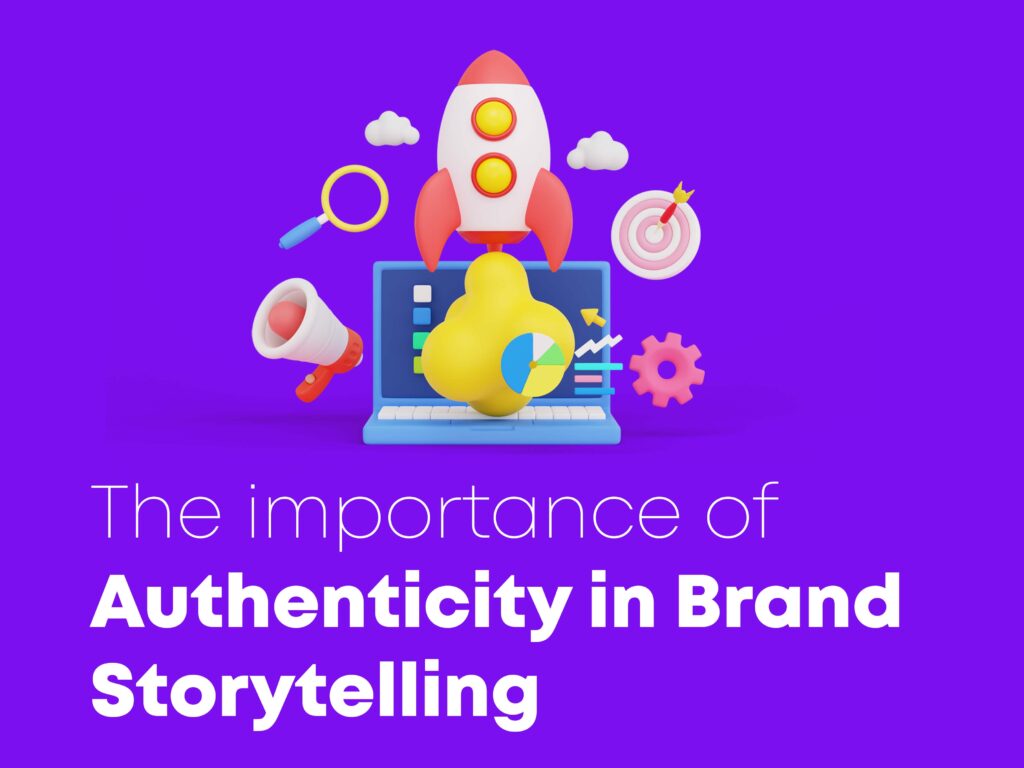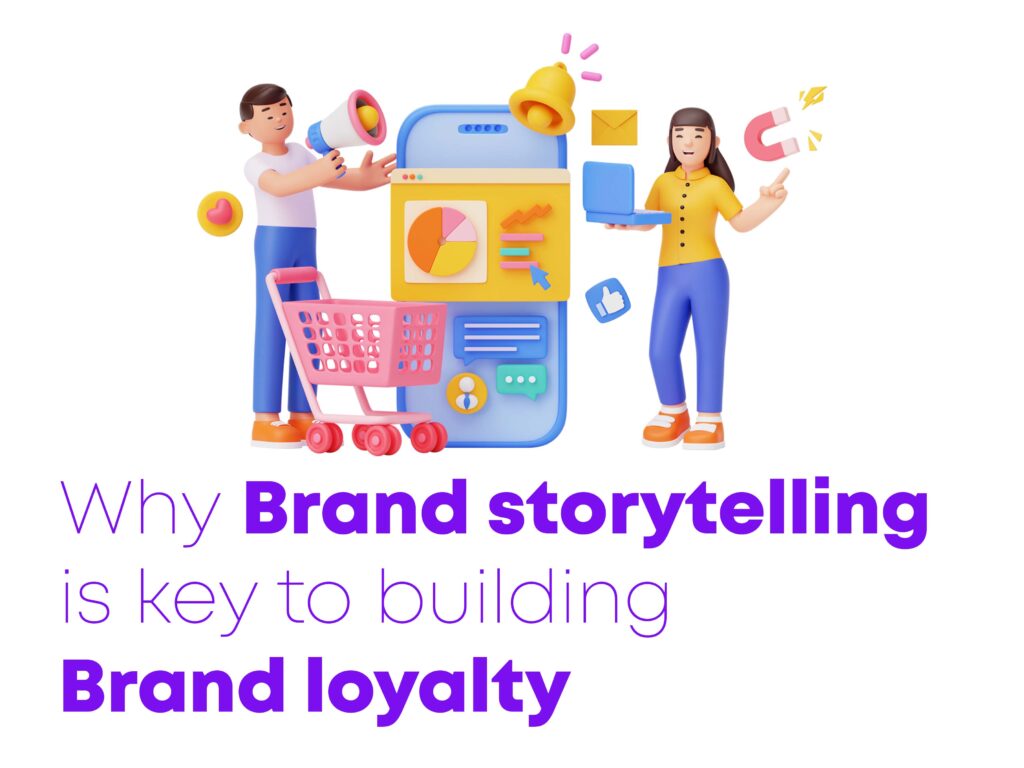- The power of storytelling in branding
- Crafting a Compelling Brand Narrative
- The importance of authenticity in brand storytelling
- Tips for creating a memorable brand story
- Why brand storytelling is key to building brand loyalty
- Incorporating brand storytelling into your content marketing strategy
- Conclusion
In today’s fast-paced business world, brand storytelling has emerged as one of the most powerful tools for businesses to connect with their customers. Behind every successful brand, there is a compelling story that has been carefully crafted, tailored, and presented to the target audience. The art of storytelling has become so critical that brands’ bottom lines now heavily rely on it. But what really makes some brand stories stand out over others? In this blog post, we will explore the best brand storytelling rules that can make your brand story more captivating and memorable.
The Power of Storytelling in Branding

The human brain is wired to respond to stories; they are memorable, engaging, and entertaining. When a brand tells a compelling story, it can capture the audience’s attention, engage them emotionally, and leave a lasting impression. Storytelling allows brands to communicate their values, mission, and purpose in a more meaningful way.
Storytelling can also build trust between the brand and the consumer. Brands that share their story authentically and transparently can show consumers that they are genuine and trustworthy. A brand story can create a sense of strong emotional connections with customers and increase brand loyalty.
In the age of social media, storytelling has become more critical than ever before. Social media platforms offer brands the perfect opportunity to reach and engage with their audiences on a personal level. Brands that can tell their story effectively on social media stand to gain a competitive advantage.
Crafting a Compelling Brand Narrative

Crafting a compelling brand narrative requires careful thought and planning. You need to know your brand’s true identity, understand your target audience, and create stories that align with their passions and interests. The following tips will help you craft an effective brand narrative:
- Be Authentic
Authenticity is essential in brand storytelling. Avoid making lofty claims or over exaggerating your brand’s attributes. Your story should align with your brand’s values in an honest and authentic way. Creating an authentic brand narrative involves exploring your brand’s history, culture, and people to identify elements that are unique to your brand. Consider what experiences led you to start your business and what inspired you along the way. Authenticity creates a sense of trust and transparency that consumers appreciate.
- Make it Relevant
To engage your audience, your brand narrative should be relevant to their lives and experiences. Incorporate elements that your target audience will find relatable and engaging. You can achieve this by identifying their pain points, aspirations, and interests. Your brand narrative should be a resonant story that speaks to their emotions and experiences.
- Create a Hero’s Journey
A hero’s journey is a storytelling technique that involves taking your audience on a transformative journey. Your brand narrative should have a beginning, middle, and end. It should take your audience through a transformational journey that aligns with their values. The protagonist of your story could be your brand, but it’s equally essential to create a character who represents your target audience. Make them the hero of the story by showing how your brand helps them overcome challenges.
- Use Visuals to Enhance Your Story
The use of visuals can enhance your brand narrative by creating a powerful emotional experience. Images, videos, and infographics are visually engaging and have the power to elicit emotions and leave a lasting impression. Use visuals to showcase your brand’s personality, values, and culture. They help to communicate your message more effectively and enhance the brand experience for your audience.
The Importance of Authenticity in Brand Storytelling

Authenticity is vital in brand storytelling. Consumers can easily pick up on inauthenticity, and it can have a negative impact on the brand’s reputation. To be authentic, brands should be transparent about their values, mission, and purpose.
Brands that tell authentic stories have a higher chance of building trust and connecting with consumers. Authenticity is vital in creating a genuine emotional connection that drives long-term brand loyalty.
One way to ensure authenticity is to ensure that your brand’s story aligns with your actions. If your brand promises to be eco-friendly, for example, you should ensure that all your actions align with this value.
Another way to ensure authenticity is by encouraging user-generated content. User-generated content is an excellent way to show that your brand resonates with consumers. If your audience can see that others have had a positive experience with your brand, it can create a sense of trust and authenticity.
Tips for creating a memorable brand story

- Be Authentic
The first and most important rule of brand storytelling is to be authentic. Consumers are wary of companies that fabricate stories to create a false sense of value. The best brand stories are true to the company’s values and mission. Your brand’s story should be a reflection of your brand’s ethics, history, and unique selling points. People love stories that are genuine and relatable and can easily spot when a brand is not being authentic.
For instance, Warby Parker’s brand story is based on the frustration of one of the co-founders while shopping for eyewear. The company’s mission is to provide affordable glasses to people who needed them. They took this idea and crafted a brand story around it, which helped them amass a lot of customers and traffic to their stores. Warby Parker’s brand story is authentic, which is why it resonates with so many people.
- Use Emotion
The next rule of brand storytelling is to use emotions. Emotions are what drive consumer behavior, and it is essential to tap into that to connect with your target audience. Stories that evoke emotions like joy, awe, or surprise are more likely to be shared on social media, leading to increased brand recognition and a wider reach.
Take a look at Coca-Cola. Their brand story has always been about spreading happiness and joy. All their commercials focus on painting the picture that drinking their soft drink will bring people together, make moments more special, and create happy memories. Coca-Cola has been telling stories that connect people to their brand for over a century now, and they have successfully created an emotional bond with their consumers through their brand storytelling.
- Know Your Target Audience
The third rule is to know your target audience. It’s important to understand the people you’re trying to reach with your brand story and their pain points. Understanding the target market will help you craft a narrative that resonates with their personal values and motivations. Conduct market research to learn more about their interests, behaviors, and preferences. This will enable you to create a more persuasive story that appeals to your audience.
For instance, Nike’s brand story has been all about motivation, inspiration, and determination. Nike’s target audience is athletes who are looking for the perfect athletic gear and products to help them succeed in their sport. Nike’s brand story showcases various athletes who have overcome obstacles to reach their desired goals, which resonates with their target market.
- Focus on Visual Content
The fourth rule of brand storytelling is the importance of visual content. In today’s fast-paced world, people are more likely to engage with images and videos than they are with text. Incorporating visual media such as photographs, videos, and captivating designs will increase engagement with your brand story. Visuals can evoke emotions and create a more immersive storytelling experience. It’s an excellent way to capture the attention of potential customers and build awareness for your brand.
Take a look at Airbnb. The company’s brand story focuses on creating unique and memorable experiences for their customers. To showcase these experiences, Airbnb creates visual content that showcases the uniqueness of each listing, evoking the emotions of wanderlust and adventure to potential Airbnb users.
Why brand storytelling is key to building brand loyalty

Brands that tell a compelling story can create a more meaningful connection with their customers. By tapping into their emotions and values, they can create a deeper level of trust, loyalty, and advocacy. Here are a few reasons why brand storytelling is critical to building brand loyalty.
- Connects on an emotional level: As humans, we connect with stories on an emotional level. The most engaging stories are those that elicit an emotional response, whether it’s joy, sadness, or inspiration. When brands tap into these emotions, they create a deeper connection that can lead to increased loyalty and advocacy.
- Differentiates from competitors: A brand story can be a powerful differentiator in a crowded market. When consumers are faced with multiple options, they’re more likely to choose a brand that resonates with them on a personal level. A brand story that is authentic, engaging, and unique can set a brand apart from its competitors and create a more memorable impression.
- Creates a sense of community: Brands that tell a compelling story can create a sense of community among their customers. When consumers feel connected to a brand, they’re more likely to engage with it on a deeper level, share their experiences with others, and even promote the brand to their own network.
Incorporating brand storytelling into your content marketing strategy

Now that we’ve explored the best brand storytelling rules and why it’s essential to building brand loyalty, let’s take a look at how to incorporate brand storytelling into your content marketing strategy.
- Tell a consistent story across channels: Consistency is key to effective brand storytelling. Make sure your brand story is consistent across all channels, from your website and social media profiles to your email marketing and advertising campaigns. This consistency will help create a more cohesive brand image and reinforce your messaging with your customers.
- Use visuals to enhance your story: Visual storytelling can be a powerful tool in brand storytelling. Consider using videos, images, and infographics to enhance your brand story and create a more engaging experience for your audience. Visuals can help bring your story to life and make it more memorable.
- Identify key touchpoints in the customer journey: To create a more effective brand story, it’s essential to identify the key touchpoints in the customer journey. Where do your customers first encounter your brand? What are the most critical moments in their customer journey? By identifying these touchpoints, you can tailor your brand story to connect with them at each stage, creating a more memorable and engaging experience.
Conclusion
In summary, the best brand storytelling rules focus on creating an emotional connection with your audience. Your brand story should be authentic, personal, simple, and consistent. Using different channels can help you reach a broader audience, while keeping it vivid can ensure that your story is memorable. Remember to use a clear purpose and create emotional resonance while painting a clear picture of your brand’s journey. By applying these principles, your brand story can stand out, retain your audience’s attention, and drive brand loyalty.



